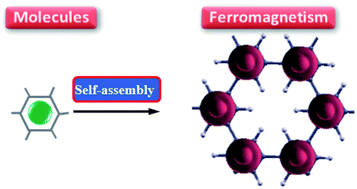Two-dimensional organometallic porous sheets with possible high-temperature ferromagnetism
Abstract
With the rapid development of modern nanotechnology, molecular

Maintenance work is planned for Wednesday 1st May 2024 from 9:00am to 11:00am (BST).
During this time, the performance of our website may be affected - searches may run slowly and some pages may be temporarily unavailable. If this happens, please try refreshing your web browser or try waiting two to three minutes before trying again.
We apologise for any inconvenience this might cause and thank you for your patience.
* Corresponding authors
a
Key Laboratory of Soft Chemistry and Functional Materials, Ministry of Education, and Department of Applied Physics, Nanjing University of Science and Technology, Nanjing, Jiangsu 210094, P. R. China
E-mail:
ekan@mail.njust.edu.cn, cxiao@mail.njust.edu.cn
b Department of Materials Science and Engineering, Hefei National Lab for Physical Science at the Microscale, CAS Key Laboratory of Energy Conversion Materials, University of Science and Technology of China, Hefei, Anhui 230026, P. R. China
c Department of Chemistry, Pohang University of Science and Technology, San 31 Hyoia-dong, Namgu, Pohang, Kyungbuk 790-784, South Korea
With the rapid development of modern nanotechnology, molecular

 Please wait while we load your content...
Something went wrong. Try again?
Please wait while we load your content...
Something went wrong. Try again?
E. Kan, X. Wu, C. Lee, J. H. Shim, R. Lu, C. Xiao and K. Deng, Nanoscale, 2012, 4, 5304 DOI: 10.1039/C2NR31074K
To request permission to reproduce material from this article, please go to the Copyright Clearance Center request page.
If you are an author contributing to an RSC publication, you do not need to request permission provided correct acknowledgement is given.
If you are the author of this article, you do not need to request permission to reproduce figures and diagrams provided correct acknowledgement is given. If you want to reproduce the whole article in a third-party publication (excluding your thesis/dissertation for which permission is not required) please go to the Copyright Clearance Center request page.
Read more about how to correctly acknowledge RSC content.
 Fetching data from CrossRef.
Fetching data from CrossRef.
This may take some time to load.
Loading related content
